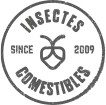People already entertaining a deep passion for bugs will only have a few things to learn from this article. It may however interest the wayward visitor. In any case, by reading this article you will definitively have no excuse if you were to confuse an insect with a mite or other corny.
Sometimes popular and sometimes not, bugs are always a wellspring of deep emotions for humans. Disgust, dislike, fear, admiration and delight are just some of what these extraordinary animals can mak us feel. The roots of the word "insect" already gives us a taste of what to look out for. Indeed, 'insect' comes from Latin "insecta", meaning "cut", thus designating the three component parts of an insect: its head, thorax and abdomen.
What it's like to be a bug
Insects comes from adistinct branch of the arthropod family. Insects are small invertebrate animals. All insects share easily recognizable external features which could be described like these :
- they usually have three pairs of jointed legs
- a pair of antennas and usually one or two pairs of wings in adulthood.
Knowing other characteristics usually allows us to identify them more easily.
What is it made of?
Their head are usually located on the upper part of the body. On their head are found the maw, the antennae and the eyes. Their maw are specially designed according to their own set of specificities. Some insects feed on nectar, thus their maw adopted the form of a proboscis in order to better suck liquids. Others feed on plants and are instead forced to chew. Some insects bite or pinch, others pierce or suck blood. For as many methods of feeding, we find a new kind of maw structure varying to some degrees.
As for their antennas, their forms and shapes are constantly adapting to allow them to better perceive sounds, vibrations and other environmental factors. Bugs can have two types of eyes too. Simple ones (like ours) or several sets also in order to help them having a better view of their complex environment.
The thorax area includes legs and wings (if any). Muscles controlling movement are located in this area, too. Legs may change forms and their length will adjust according to their unique habitat. Similarly, wings feature different shapes or sizes.
Finally, the abdominal area are where vital organs are located. Digestive organs including stomach and intestines, reproductive organs and glands secreting pheromones (for attracting potential mate) are also located there.
Rich diversity
Bugs make up for the biggest part of our animal biomass on earth. It has been estimated there are over a million different insect species in the world. Bugs are beneficial to us too. They pollinate our food crops, they help boost organic materials decomposition and have an important support role for medical and scientific research. They can however harm us too by spreading disease and destroying crops as well as other man-made structures and buildings.
The life cycle of an insect
Let us now on the life of the insect. The development cycle of insects has several stages.
This is first of embryonic development stage leading to the outbreak of the egg. Embryonic development is most often occurs within the egg in conditions oviparity.
Then comes the post-embryonic development, namely the transition from birth to adulthood. If the egg output in the individual physiological characteristics and a different way of life of the adult, it forms a larva.
When similar to adult, then it is called juvenile.
A very large proportion of insects change appearance throughout their development: it is the metamorphosis. Indeed, the exoskeleton forming the protective casing is brought to the insect to be periodically replaced due to its rigidity: these moulting.
Metamorphosis is described as incomplete or complete depending on the extent of changes during development.
Three main phases in the incomplete metamorphosis: egg, larva and adult. The individual released hatching often looks already to adult, so it is a larva. One often uses the name of the nymph larva of insects with wings (or hemimetabolic). The term nymph will refer to the aquatic larva of certain insects such as dragonflies and mayflies.
The power level, it may or may not differ from the adult. If the larvae can move as an adult, it is not yet possible, however it fly. Indeed, in most hemimetabolous insects (grasshoppers, praying mantises, ..), young larvae do not have wings. After several molts that are beginning to emerge on the wings. The molt marks the metamorphosis into an adult insect (imago). It is now able to fly and able to reproduce.
